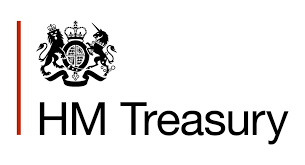PRESS RELEASE : Patients to benefit from new ambulance hubs and discharge lounges [June 2023]
The press release issued by the Department of Health and Social Care on 13 June 2023.
The facilities will help cut urgent and emergency care waiting times for tens of thousands of patients across the country.
- Six new ambulance hubs will increase efficiency – cutting out unnecessary delays and getting ambulances back on the road faster, ensuring they can reach people as quickly as possible
- 42 discharge lounges are freeing up hospital beds, providing a more comfortable environment for patients who are about to return home
- Backed by nearly £50 million in investment as part of plans to improve urgent and emergency care performance and cut waiting lists, one of the government’s top five priorities
Six new ambulance hubs and 42 new and upgraded discharge lounges are opening at hospitals across the country, which will help cut urgent and emergency care waiting times for tens of thousands of patients.
The new facilities are backed by the £50 million investment that was announced by the Health and Social Care Secretary Steve Barclay in January to help free up hospital beds and cut down on waiting times for patients ahead of next winter.
In certain areas, ambulance queues to hand patients over to hospital care can be made worse due to a lack of physical space. The ambulance hubs will increase efficiency– cutting out unnecessary delays and getting ambulances back on the road faster, ensuring they can reach people as quickly as possible.
Four of the new hubs – located at the Princess Royal Hospital in Telford Shropshire, the Leicester Royal Infirmary, the James Cook Hospital in Middlesbrough, and the Doncaster Royal – are already live and providing additional urgent and emergency care capacity. Two further hubs will come into use this summer at the Queen’s Hospital in Romford, east London, and the Glenfield Hospital in Leicester.
Feedback from Trusts suggests that 1,000 patients have already benefitted from the ambulance hubs so far. The Doncaster Royal has met national targets for ambulance handovers every day since its hub opened, while the Leicester Royal Infirmary has reported an 86% reduction in hours lost to delays since November 2022.
Health and Social Care Secretary Steve Barclay said:
These new ambulance hubs and discharge lounges are another example of how we’re investing to cut waiting times – one of the government’s top five priorities. They are already benefitting tens of thousands of patients by freeing up beds and reducing the time for patients waiting to be admitted from A&E.
The hubs will allow ambulances to manoeuvre more quickly and cut out unnecessary delays, and the lounges will free up hospital beds, while offering patients a more comfortable environment to recover in while they’re waiting to leave hospital. All of this is to ensure we can bring down waiting times and prepare for next winter.
Health Minister Lord Markham said:
Waiting times have already substantially reduced from the peak of winter pressures – but we know there is more to do, and we are investing record funding in health and care services to reduce waiting times and improve patient care.
These new ambulance hubs will help free up ambulance crews to get back on the road more quickly and respond to emergencies, while expanded and upgraded discharge lounges will help free up hospital beds and cut A&E waiting times.
NHSE National Director of Integrated Urgent and Emergency Care and NHSE Deputy Chief Operating Officer, Sarah-Jane Marsh, said:
The hard work of health and social care teams across the country has meant we have seen improvements in ambulance response times and A&E performance since December, despite the impact of seasonal viruses, industrial action, and higher than usual bed occupancy.
These dedicated spaces, alongside the range of actions we have outlined in our urgent and emergency care recovery plan, including thousands of new beds, hundreds of new ambulances and measures to help treat more people in the community, will help us further improve patient experience and help avoid unnecessary hospital admissions ahead of next winter.
Patients who are due to be discharged that day but are waiting for medication or transportation will benefit from the discharge lounges – helping to free up beds and reduce waits for patients waiting to be admitted from A&E. These dedicated rooms will provide 439 additional beds, 364 chairs, and 44 extra trolleys in hospitals, freeing up capacity up across the country.
The discharge lounges are improving patient experience by creating more space in hospitals, offering a comfortable environment with TVs, hot meals and discharge lounge nurses to attend to people’s needs while they are waiting – with 26 already open.
Backed by more than £360,000 in funding, Northwick Park Hospital in north west London upgraded its lounge with six new beds and 10 chairs – improving flow through the hospital and impacting nearly 2,500 patients. The Hull Royal Infirmary received £300,000 in funding to convert its discharge lounge and provide an additional 52 beds, and nearly 1,500 patients have already used the facilities.
Earlier this year, the government and NHS published an Urgent and Emergency Recovery Care Plan to achieve one of the fastest and longest sustained improvements in emergency waiting times in the NHS’ history. Frontline capacity will be boosted with 800 new ambulances, including 100 specialist mental health vehicles, and 5,000 more sustainable hospital beds backed by a £1 billion dedicated fund.
The NHS successfully met the first target in its Elective Recovery Plan to virtually eliminate waits of over two years and has cut 18 month waits by over 91% from the peak in September 2021.
There are already record numbers of people working in the NHS overall, and the NHS will shortly publish a long term workforce plan setting out plans to recruit and retain more staff. All of this is backed by up to £14.1 billion for health and social care over the next two years, on top of record funding.



